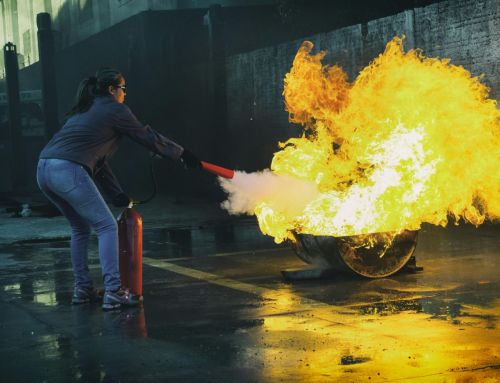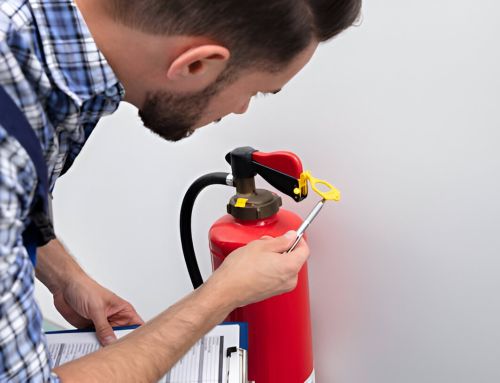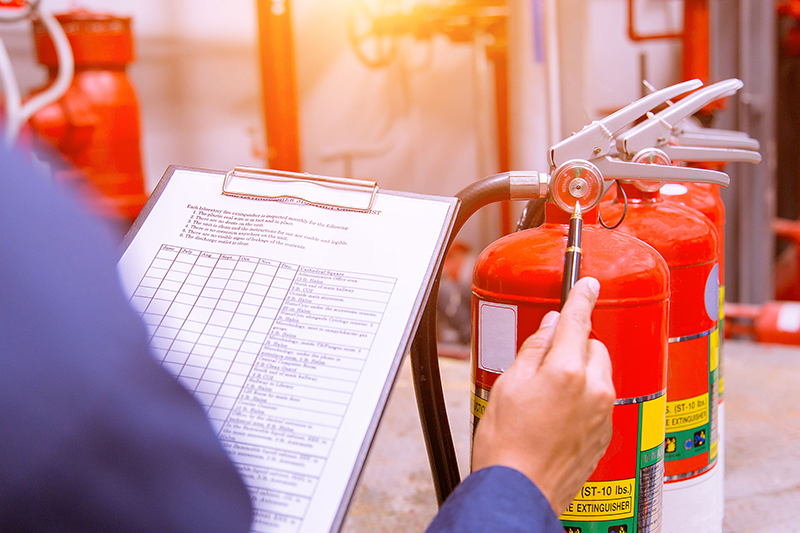
In a recent fire risk assessment for a commercial building, I uncovered a concerning issue with blocked emergency exits due to storage equipment obstructing the path. Addressing this potential hazard required a meticulous evaluation of the layout and a strategic plan to ensure swift evacuation in case of a fire emergency.
As I navigated through the five essential steps of a fire risk assessment, each stage revealed critical insights into fortifying against unforeseen dangers.
Join me on this journey as we unravel the intricacies of safeguarding lives and property through a comprehensive approach to fire safety.
Understanding Fire Risk Assessment

Understanding the process of fire risk assessment is crucial for ensuring the safety of individuals and property within a workplace environment. To begin, implementing risk mitigation strategies is fundamental in reducing the likelihood of fire incidents. This involves employing fire prevention techniques such as regular equipment maintenance, proper storage of flammable materials, and ensuring adherence to safety protocols.
Emergency response planning is equally essential and should include clear evacuation procedures, designated assembly points, and regular drills to prepare all personnel for potential emergencies. Additionally, workplace safety measures like installing fire alarms, extinguishers, and adequate lighting play a key role in enhancing overall safety levels.
Lastly, effective hazard identification tips, such as recognizing potential sources of fires like heaters or electrical equipment, are vital in proactively addressing risks before they escalate. By diligently incorporating these elements into the fire risk assessment process, organizations can establish a comprehensive approach to safeguarding their workforce and premises from the devastating impact of fires.
Five-step Fire Risk Assessment Guide
To effectively conduct a fire risk assessment, one must follow a structured five-step process that encompasses hazard identification, risk evaluation, and action planning.
The initial step involves identifying potential fire hazards within the workplace, considering elements such as heat sources, fuel, and oxygen availability.
Once hazards are recognized, the next phase is to evaluate the risks posed to individuals in the vicinity, including employees, visitors, and contractors. This evaluation extends to considering detection methods, escape routes, and emergency planning procedures.
Following risk evaluation, it’s crucial to document findings and actions taken to mitigate identified risks. This documentation process is essential for maintaining a comprehensive fire prevention and safety plan, which should be shared with all personnel.
Regular review of the assessment is necessary to ensure its relevance and effectiveness in workplace safety. By following this structured approach, businesses can enhance workplace safety, reduce fire risks, and improve emergency planning measures.
Process of Identifying Hazards
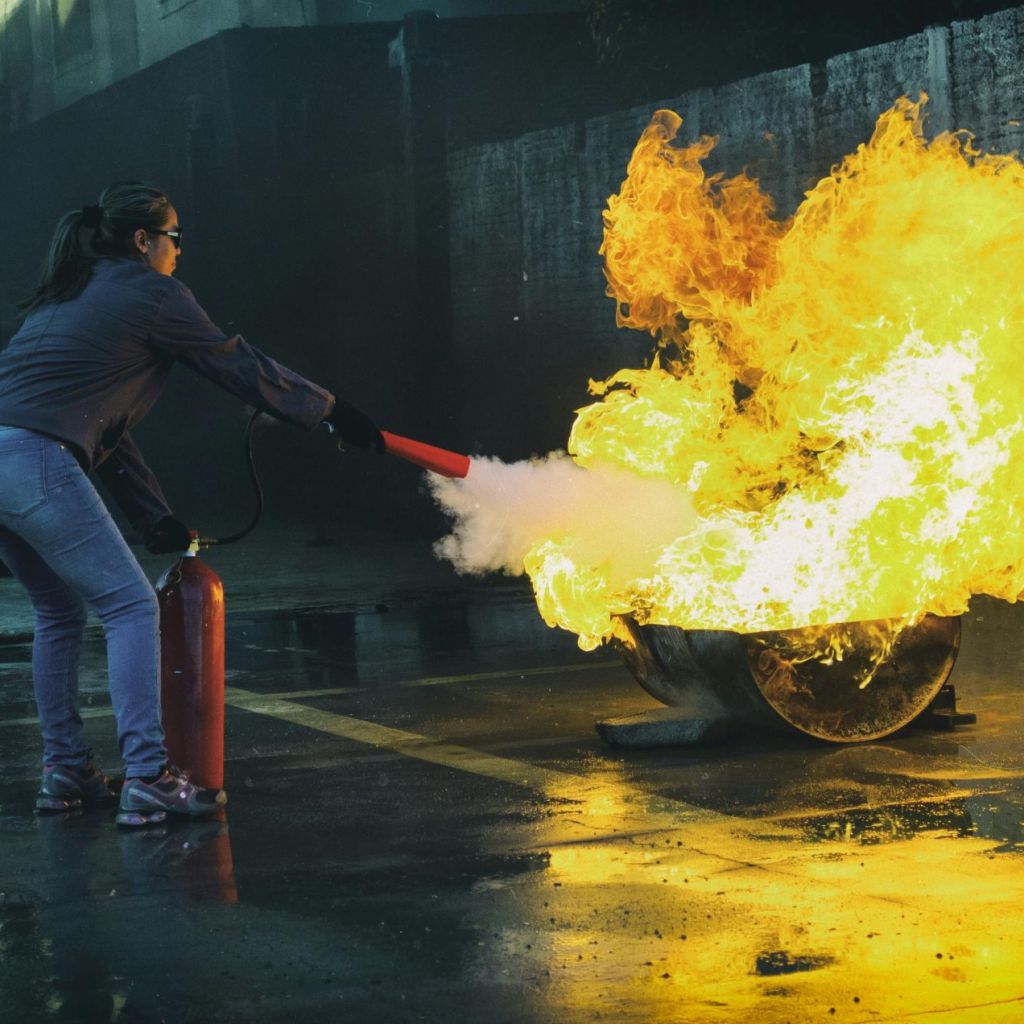
Moving from the structured process of conducting a fire risk assessment, the focus now shifts towards outlining the methodology for identifying hazards within the workplace environment. Hazard recognition is crucial in preventing fires, involving a comprehensive analysis of the fire triangle elements: heat, fuel, and oxygen.
Utilizing risk assessment techniques, potential sources like heaters, naked flames, and electrical equipment are identified. Hazardous materials such as packaging, rubbish, furniture, and equipment must be recognized to mitigate risks. Implementing prevention strategies is key, separating potential fuel sources from ignition sources to reduce fire hazards.
The identification of hazards should lead to the implementation of prevention strategies, ensuring a safer workplace. Regular inspection of both interior and exterior premises for hazards and vigilance towards high-risk items that could easily ignite are essential. By identifying and addressing these hazards promptly, the workplace can significantly reduce the risk of fire incidents.
Recognizing Persons at Risk
Identifying individuals at risk during a fire incident is crucial for ensuring the safety of all personnel in and around the premises. When evaluating fire hazards, it’s essential to consider vulnerable populations such as night staff, individuals with disabilities, the elderly, and visitors who might be unfamiliar with the premises.
Implementing safety measures like clear evacuation planning tailored to the needs of these groups is vital. Risk evaluation should focus on understanding the specific challenges these populations might face during an emergency. Emergency procedures must be designed to accommodate their requirements, ensuring swift and safe evacuation.
Evaluation and Record-Keeping
When evaluating fire hazards and ensuring the safety of all personnel, a critical aspect is the thorough evaluation of risks and the meticulous record-keeping processes that follow. Risk mitigation strategies are put in place to reduce the likelihood of fire incidents. Data management plays a crucial role in documenting all safety measures and assessment findings. Safety documentation is essential for compliance tracking with regulations and standards, ensuring that all necessary precautions are taken to prevent fire risks. Record retention is vital for future reference and to track the effectiveness of implemented safety measures over time.
| Risk Mitigation | Data Management | Safety Documentation |
|---|---|---|
| Implement safety protocols | Maintain detailed records | Document safety procedures |
| Conduct regular safety audits | Store data securely | Keep updated safety manuals |
| Provide staff training | Analyze safety data trends | Record safety inspections |
| Compliance Tracking | Record Retention |
|---|---|
| Ensure adherence to regulations | Archive assessment findings |
| Monitor safety updates | Retain safety records for specified periods |
| Document compliance measures | Store data for future reference |
Regular Review and Update Process
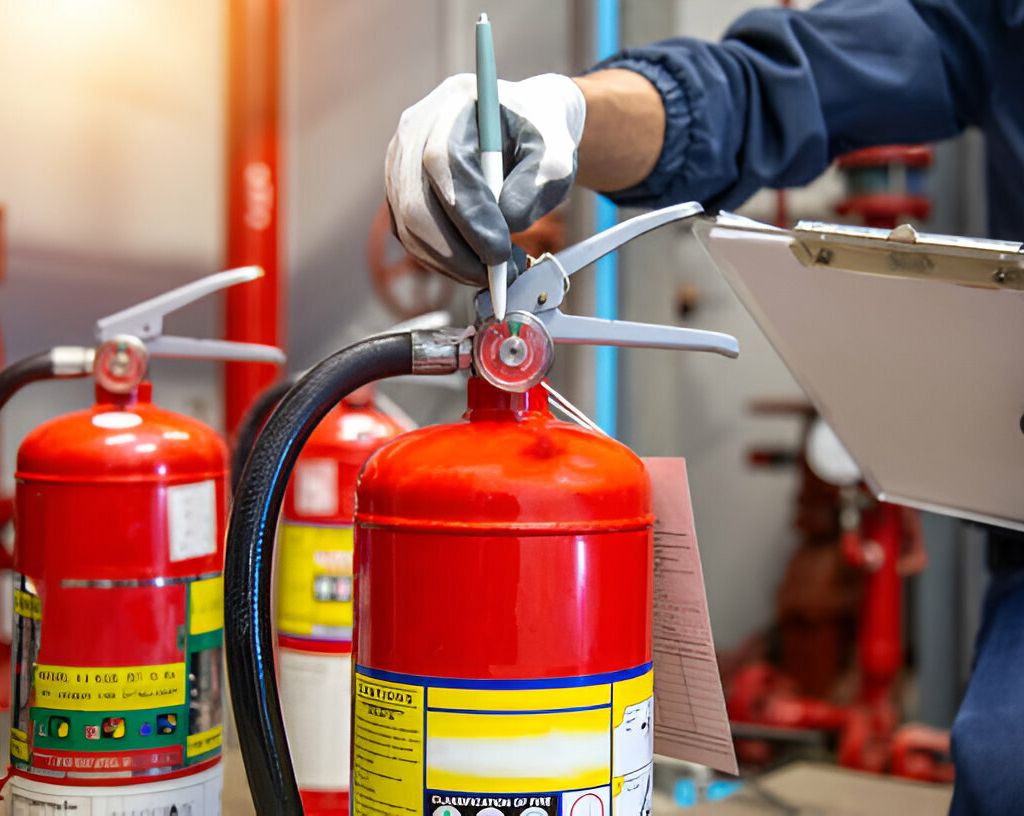
To maintain a high level of fire safety preparedness, regular review and update processes are crucial in ensuring the effectiveness of implemented measures. The review frequency should be based on triggers like fires, alterations, and occupancy changes. Updating procedures involve learning from past incidents to improve future fire safety measures and communicating significant changes to all staff promptly. It’s essential to apply the hierarchy of risk control to reduce fire hazards effectively.
Identifying triggers for review, such as near misses or significant changes, ensures that the assessment remains relevant and up to date. When occupancy changes occur, whether due to new staff, modified operations, or increased capacity, an immediate review is necessary to adapt fire safety measures accordingly. By following a structured approach to review and update processes, organizations can maintain a proactive stance towards fire safety and minimize potential risks effectively.
Frequently Asked Questions
How Can Technology Be Utilized to Improve the Efficiency and Accuracy of Fire Risk Assessments?
Technology integration enhances fire risk assessment by automating data analysis, improving reporting, and monitoring risks in real-time. Digital solutions streamline compliance tracking, optimize inspections, and enable predictive modeling for proactive risk mitigation.
What Are Some Common Misconceptions or Myths About Fire Safety That People Should Be Aware of During a Risk Assessment?
During a fire risk assessment, it’s vital to debunk myths like “fire drills are just for show.” They’re crucial for practicing emergency exits. Smoke alarms and fire extinguishers aren’t decorations; they’re tools for fire prevention and safety.
How Do Cultural or Societal Factors Impact Fire Risk Assessments in Different Workplaces or Environments?
Cultural norms, societal beliefs, and workplace diversity can influence fire risk assessments. Understanding organizational culture and safety protocols, incorporating community engagement, and tailoring training programs to address risk perception and emergency response enhance overall safety measures.
What Role Does Communication Play in Ensuring the Success of Fire Safety Measures Following a Risk Assessment?
Communication is vital for fire safety success. Training programs ensure staff understand emergency protocols. Awareness campaigns raise vigilance. Safety drills practice responses. Effective communication strategies disseminate crucial information swiftly, fostering a culture of preparedness and swift action.
How Can Organizations Effectively Incorporate Feedback From Employees and Stakeholders Into Their Fire Risk Assessment Processes?
To effectively integrate feedback from employees and stakeholders into fire risk assessments, I prioritize stakeholder engagement and employee involvement. Collecting feedback, understanding risk perception, and fostering a safety culture ensures comprehensive risk assessment and proactive safety measures.
Conclusion
In conclusion, the five steps of a fire risk assessment are crucial in ensuring the safety and protection of lives and property.
By identifying hazards, assessing individuals at risk, evaluating and documenting findings, and regularly reviewing and updating procedures, we create a solid foundation for fire safety.
This comprehensive approach not only mitigates risks but also fosters a culture of preparedness and awareness, ultimately helping us combat the unpredictable nature of fire with resilience and vigilance.

